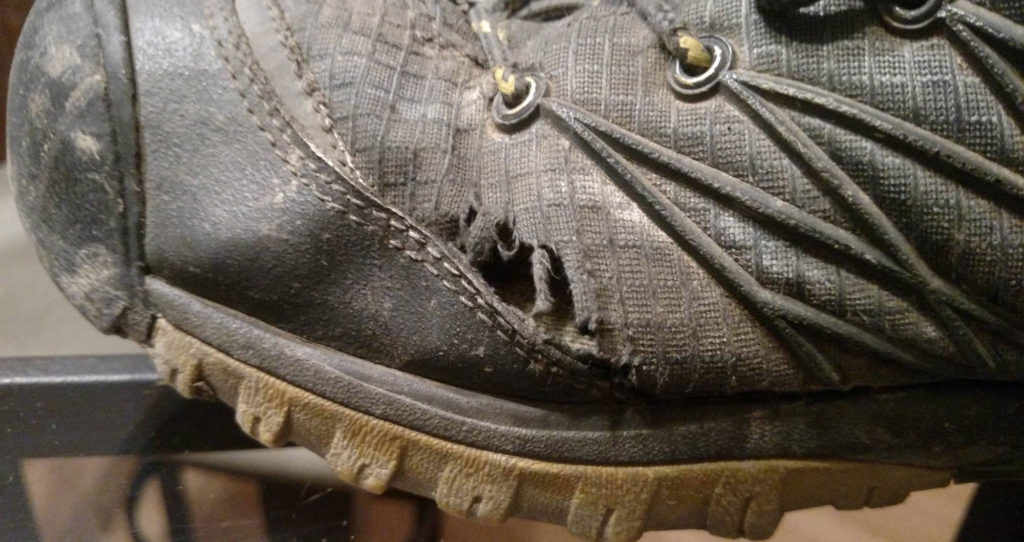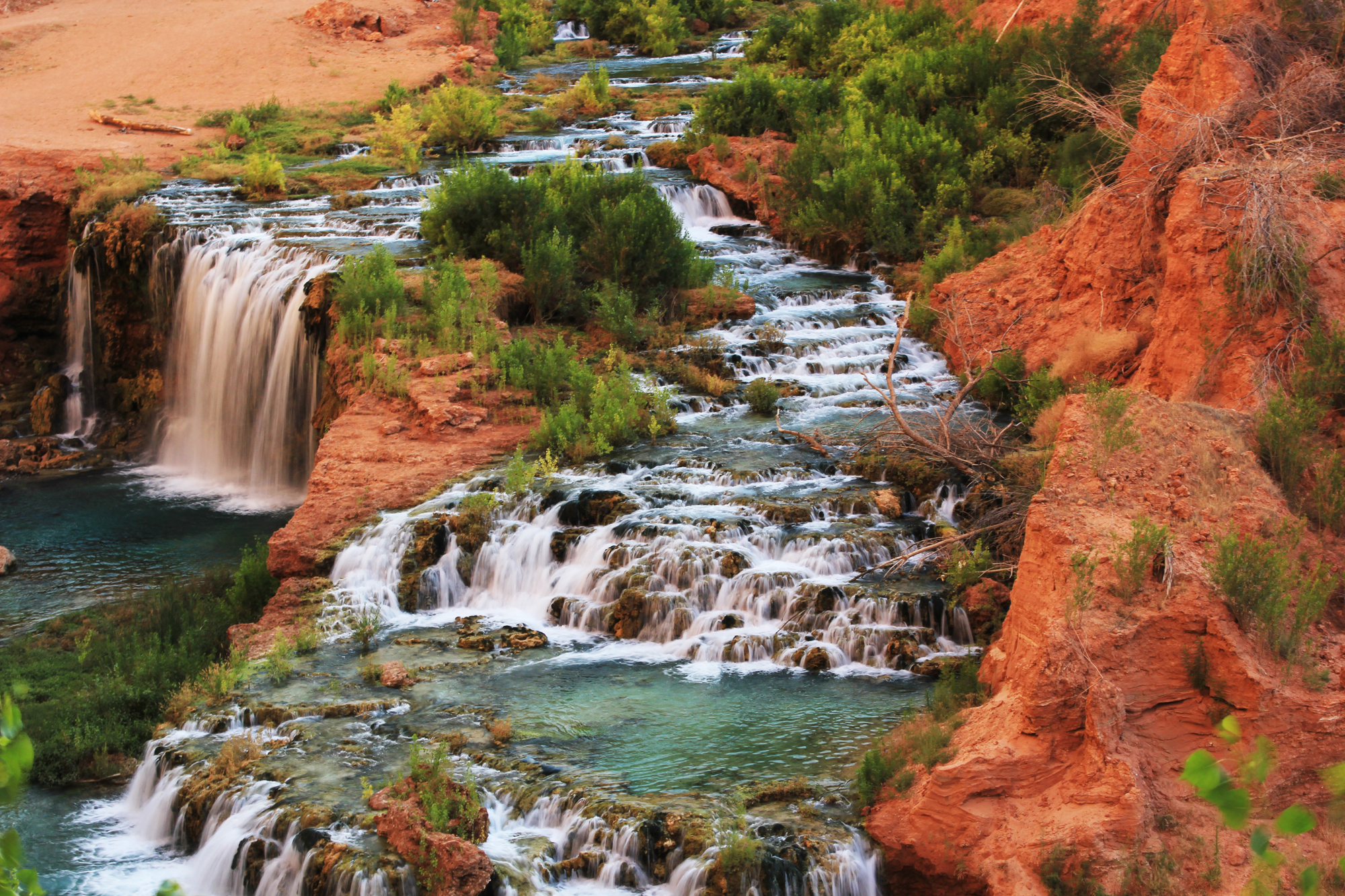This collective of Footwear recommendations is by numerous experienced backpackers that have provided input. Backpacking not only this area, but backpacking in general, anywhere.
We will discuss Footwear, Socks, Toenails, and Water Shoes. Especially for this trip, this terrain, and for safety reasons that many choose to ignore.
Many ignore functionality for the sake of looking ‘cool’ or “rad’, or whatever your generational lingo might be.
If you have something that needs added please email us with your thoughts.
IT’S ALL ABOUT THE FOOTWEAR
The type of boot or footwear you hit this trail with, will probably be your most important decision concerning gear.
Many people attempting this trip may have never done long distant hiking, let alone Backpacking under a load. Also not in such terrain.
Hiking and backpacking are two different worlds. We aren’t providing info for those that wimp out and have their gear transported. Or for those that have their gear transported due to some special need due to medical or physical issues.
This info is for those that will truly be strapping all their gear on their back and hoofing it down the trail. Then back up the switchbacks.
Many have hauled their own gear while backpacking in. Then decide, there is no way they are carrying it back out. Remember those uphill switchbacks will be facing you the day you leave.
The terrain and climate on this trip can be a challenge to many even without a pack. Add to these facts, the majority of people doing this trip tend to carry a pack that is way over weight. Many people are also not in peak physical condition.
There are many brands of footwear out there. It all boils down to personal choice, fit, and what you can afford. This is one item that really falls in the category of “You get what you pay for”. Don’t go cheap (Cheap in terms of poor quality) just because you think you will only use them for this one trip.
Don’t be swayed by recommendations that just don’t make sense for the terrain, pack weight, distance, weather (cold/wet) etc.
There is a reason Military personnel worldwide wear boots. The type that protects the ankles, provides sole protection, and arch support….. to repeat some of the reasoning. Not tennis shoes, or trail runners, etc.

Wearing proper, properly fitted,and properly broke in footwear will prevent a multitude of foot and ankle pain, and injuries.
Properly fitted also means making allowances for feet swelling or spreading, when hiking long distances, or under backpacks loads.
Breaking your footwear in is a must!
You won’t need many of the foot blister products that people recommend to make up for not heeding this simple step.
The majority of new people will unfortunately not listen to this advice, then end up learning some hard and painful lessons. But experience is a wonderful teacher.
Substantial soles are recommended to protect the bottom of your foot. The stretch of the trail between the trail head and the village is rough and rocky terrain. After the village it is mostly sand. In the hot summer sun that sand can be quite hot. But a thousand steps on poor soles is like beating your feet over many hours. Walking on stones especially under load, with inadequate soles can cause long term pain that can last well beyond your trip.
Over the ankle footwear is better when used while backpacking under load or used to walk in rough terrain. It provides added support to prevent sprains. It is also highly recommended when cold and rainy.
The terrain on this trip can often cause you to misstep and twist or sprain an ankle.
Wearing low cut shoes can raise the chance of injury. Going down with a pack strapped on can cause broken arms, fingers, wrists, and the list goes on.
When backpacking under a load your foot tends to spread out and swell to some degree. Many of us have found boot styles that compensate for this. I personally recommend Keen’s brand after trying many brands over the years. They provide ample toe room .
When being fitted you want to take the socks you will hike with. Have the boots professionally fitted. Don’t just grab a pair of cheap boots off a discount rack, in your size, and head out the door for home…or worst out on the trail. They also need broke in!
Higher boots are recommended during the cold weather months. Especially when there is a chance of rain. Waterproof even better.
This brings up the point of using waterproof over the ankle boots when it is wet and cold. We are talking temperatures in the teens through the upper thirty degree Fahrenheit temps. You can experience such temps in this area depending on time of year. You may even want to consider “Gaiters” and rain pants over those, to prevent rain or splashed water from running into the tops of your footwear.
You won’t stand a chance with low cut footwear in the wet and cold. If you can tolerate wet feet at 30°F or lower, then go for it.
Closed toe footwear is highly recommended. Seasoned backpackers consider it a “must”. There will always be those that will brag they backpacked this in sandals, flip-flops, or tennis shoes. That they find them comfortable and the way to go. If you are new to this, don’t gravitate to this mentality. Rest assured, there are many testimonials of people having extreme pain and long lasting injuries. Inadequate types of footwear can be hazardous backpacking or even hiking.
We have made multiple trips into this area and every time, witness people with inadequate footwear dealing with incapacitating foot and ankle injuries. Blisters seem to be the biggest problem.
Some that become incapacitated can ruin the trip for an entire group. A group of friends that may have spent months if not years waiting and planning for this trip. This is no longer an inexpensive trip either. Fee’s have been jumping each year.
Many ignore the recommendation of bottom soles rated for backpacking. Or ankle support to avoid twisting an ankle.
Some people will blow off experienced people recommending shoes/boots rugged enough, and made specifically for backpacking.
Proper footwear may also prevent knee and back injuries, or the unfortunate accident of going down with the weight of your pack on you. As said earlier, such a fall can result in finger, wrist, arm fractures, and damaged knees.
We even have a story from an acquaintance that went down. Hard enough to result in a broken nose.
Full protection footwear with socks is recommended. Both for protection from sharp objects, and to prevent sand and small stones rubbing your skin.
Open toes shoes are famous for getting a person stuck in the toe by thorns, cactus needles, twigs, or some other pointed object. Remember this is desert terrain.
It’s an invitation to peel off a toenail. Or worse, catch a toe and break it.
With punctures you would have to be concerned with tetanus or other types of infection. Or run something sharp up under your toenail. The coyotes will come running to your howling!
This is the same reason seasoned deck hands on boats wear closed toe footwear. They have the learned knowledge concerning similar hazards such as catching a toe on a deck cleat or other hardware.
Open footwear has a tendency to load up with sand or sharp small pebbles. All of which act like sandpaper on your tender feet.
There are endless rookies out there that have been lucky. People that pay no heed, and haven’t had an accident happen yet. They suggest or even brag they backpacked in sandals or other inadequate footwear.
This is the same mentality as not wearing a seat belt in a car because of never having a crash yet. People wouldn’t have accidents if they could see what the next few minutes of life had approaching.
You are pretty much on your own in this remote area. Leaving pain and suffering out of the equation, it is real inconvenient and expensive to seek any type of emergency medical attention.
Should you be injured, you will more than likely have to do considerable hiking with serious pain.
Tribal ATV transport fee’s (if they can get to you) has risen to $500, starting with the 2018 season. What 2019 brings may be higher?
Helicopter medi-vac….I can’t even image what that would cost someone. We have heard $20K to $40K….and that is on your dime.
Don’t be that rookie that ends up suffering to save a few dollars, believing what some say of hiking with the lesser.
Or not heeding those with the life long experience that have contributed to this collective of recommendations.
If you aren’t concerned about yourself, at least be concerned about wrecking the trip for others that may be traveling with you.
SOCKS ARE AS IMPORTANT AS YOUR BOOTS
BLISTERS -PRODUCTS AND REMEDIES TO PREVENT THEM
WHAT ELSE IS IMPORTANT? THINGS TO KNOW ABOUT TOENAILS
WATER SHOES – BRING A PAIR ON THIS TRIP
ENJOY YOUR TRIP – SUMMARIZING
I am sure you will pass some ill prepared people that are doing this hike in everything from tennis shoes to flip-flops. I have seen them limping to get on the helicopter too.
Backpack smart, enjoy the trip, and don’t ruin it for someone else that is traveling with you. It is too hard to get permits into this area. You want a trip you can brag about. Not one you complain about.
Break the boots in long before you ever do long distance hikes or backpacking. Try them out soon after purchase. Wear them around the house, to go shopping, etc. If they don’t feel right take them back while you still can.
Eventually work up to walking several miles in your boots. Then start hauling around some weight in a backpack to prep for your actual hike. Somewhere in your planning and prepping stage you need to be doing several conditioning hikes in the 12 mile range.
Don’t do this trip cold turkey with no conditioning. Again some macho types will have you believing going cold turkey is possible with no pain. When you wake up the next morning after your hike in you will know what some of us are talking about. Hiking/Backpacking down, and uphill works muscles you don’t normally work when traveling on flat terrain.
Include some inclines or stair steps in your conditioning. Remember you have over a mile of downhill incline going in (the switchbacks), and the same incline going up, on your trip out. Going downhill in this case is almost as difficult as going up. Carry your 800mg of Ibuprofen!
The secondary benefit of breaking in your footwear, and conditioning with weight, distance, and incline, is the fact you will be toughing up the skin on your feet. This especially benefits people not accustomed to long distance backpacking. We aren’t talking about building up any super layer of callus. But those that put in miles constantly, have definitely built up hardened skin that provides a huge protection factor. These people fair much better than those with soft feet.
![]()
